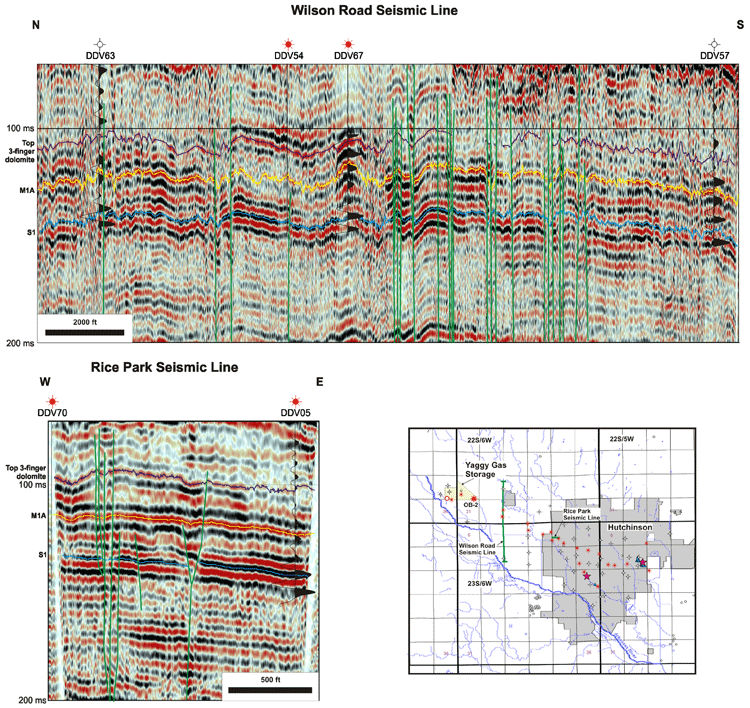
Deep-Seated Faulting and Fracturing
Two high-resolution seismic-reflection surveys were acquired in the Hutchinson area in February 2001. Seismic reflectors were correlated to stratigraphic markers using synthetic seismograms created from sonic and density logs in nearby wells. The seismic amplitude of the gas-bearing 3-finger dolomite interval varies across the study area, for the most part due to lithology changes in the encasing strata. A small volume of gas, such as at DDV #05, creates an amplitude anomaly which is indistinguishable from amplitude variations due to lithology change. The bright spot on the Wilson Road seismic line at DDV #67, however, is diagnostic of a thick zone of gas (Nissen et al., 2004). The seismic lines show a number of apparent faults, which extend below the Hutchinson Salt Member (base of salt is estimated to be 40-50 ms below S1). Most of these faults are also apparent in the sedimentary section above the 3-finger dolomite. The pervasive nature of these faults indicates that they are related to deep-seated structural activity, including movement that followed deposition of the 3-finger dolomite. These faults may have influenced salt dissolution and provided possible gas pathways. Evidence for salt dissolution associated with deep-seated faults can be seen at the center of the Rice Park seismic line. Here, two conjugate faults are visible which offset the S1 reflector and form a depression in the overlying strata. These faults appear to converge 8-9 ms below the S1 reflector. A faulted zone continues deeper into the section, but without significant vertical offset. This suggests that the shallow faults resulted from salt dissolution near the top of the salt, focused along a deeper structural element.
Click on above image for greater detail
Last updated June 2004
http://www.kgs.ku.edu/PRS/publication/2004/AAPG/NG_Migration/P2-04.html
